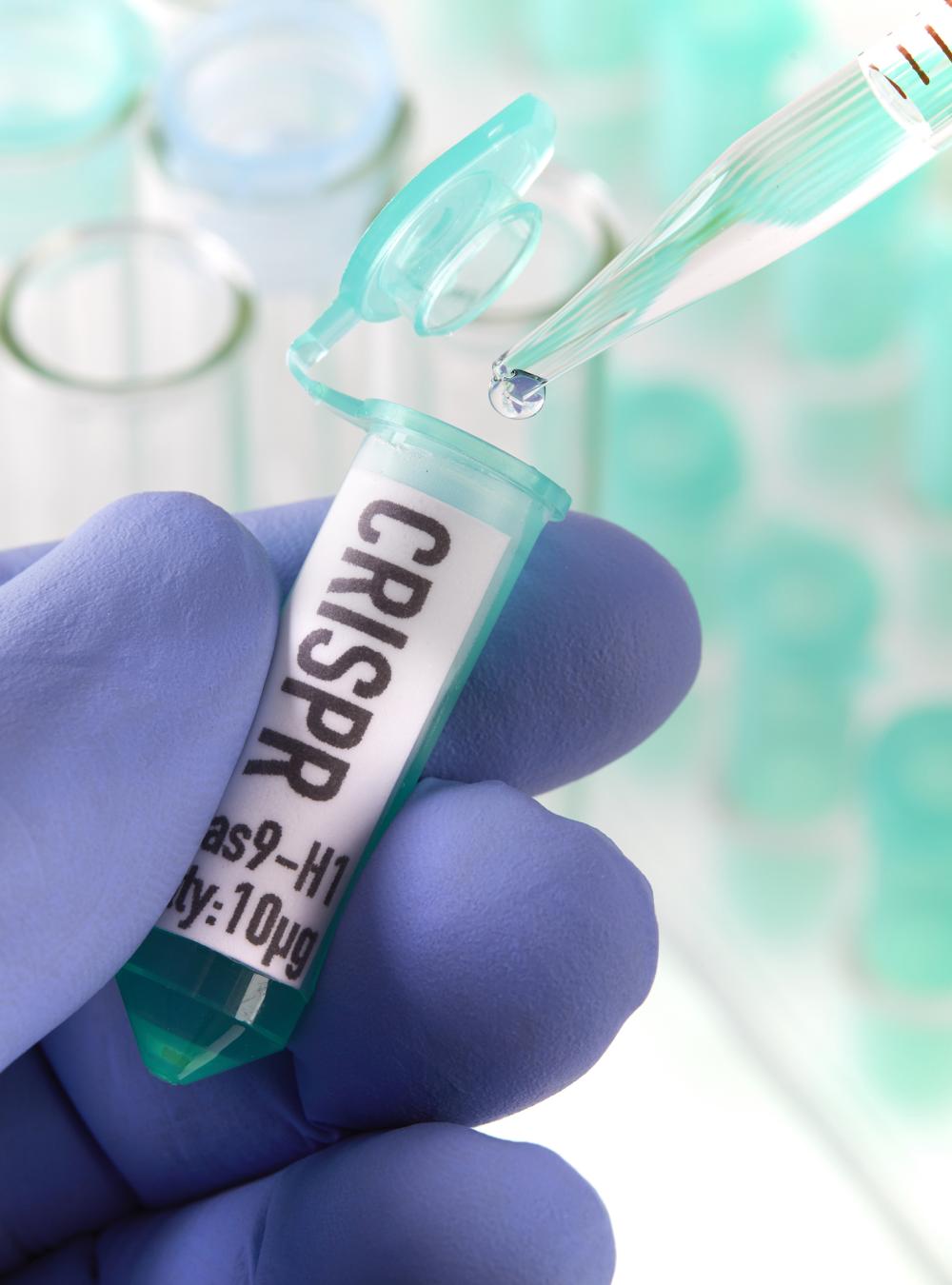MITRE researchers aim to develop an innovative approach for identifying changes to genes, using the scars CRISPR leaves behind.

Detecting the Tell-Tale Traces from Genome Editing
Genome editing has the potential for great good. Think: human gene therapy for life-threatening diseases.
Unfortunately, genome editing also has the potential for nefarious and unethical uses, such as editing DNA to select for "preferred" genetic traits, or to create hard-to-combat biothreats. There’s even the risk of unintended consequences from seemingly appropriate uses.
And once someone makes the edits, how can we tell what's natural and what's presumably man-made? By looking for the scars.
MITRE scientist Heath Farris's research in MITRE's biological sciences laboratory in McLean, Virginia, is charting a path to find ways to spot the deliberate cuts made by CRISPR—an acronym for Clustered Regularly Interspaced Short Palindromic Repeats. He's driven by the knowledge that genomic changes could last for generations.
"When you make an edit in the germ line, the basic sequence of an organism's genome is changed. These directed changes, along with potentially unintended changes, can have ramifications in the larger population several generations from now," Farris says.
"That's why it's key to determine if the edit was intentional and if it will propagate down into progeny."
Protecting the Nation from Potential Threats
From a safety perspective, the government—particularly agencies dealing with health, homeland security, and defense—need to identify these residual cues to detect potential biological threats. MITRE's cross-agency perspective, combined with our domain expertise, puts us in the position to assist with addressing this challenge and to share it for the public good.
"Our CRISPR research will directly benefit government agencies and the public," Farris says. "Being able to answer the question of 'is that a natural mutation or was this intentionally placed here?' is critically important."
A microbiologist who has authored several technical papers on CRISPR technologies and applications, Farris appreciates the challenge of developing methodologies to help unearth the clues hidden in the genome.
"I always say you need to listen to the data, and it will direct which way you go."
His approach is to develop tools that can collect evidence to reliably and accurately identify when intentional edits to the genome have been made.
Once CRISPR edits are identified, Farris examines the genome for additional evidence. Were the cells fully edited? Were the cuts in the DNA clean? Is there evidence of off-target effects such as unintentional cuts?
Partnerships Integral to Process
Not surprisingly, this work relies on collaboration with other external research institutions and scientists in other fields.
"A biologist working alone isn't going to solve this challenge," he says.
For the CRISPR research, Farris is in his third year working with Jackson Laboratory—a nonprofit biomedical laboratory in Bar Harbor, Maine—which produces models using CRISPR.
He then applies his methodology for identifying the edits and examining the results. Initially the samples all included CRISPR edits, but the next round of testing will be a blind sample for more vigorous testing of the new techniques.
MITRE also has an ongoing partnership with Los Alamos National Laboratory outside of Santa Fe, New Mexico and the Naval Research Laboratory in Washington, D.C. Their scientists are using CRISPR to make genetic edits in algae and fungi.
Deciphering the Data
While Farris is the primary investigator on the CRISPR project, which is funded through MITRE's independent research and development program, he relies on several colleagues to help decode the data he's compiled. For example, some colleagues provide computational and data analytics work on the project. A statistician analyzes the results and sifts out the biological noise to help decipher evidence revealed by new methodologies.
From Farris's perspective, the ability to reach back into MITRE and outward to external partners is integral to the success of the project. It makes a better product which in turn makes a better result.
"You get better answers—more complete answers—that way," Farris says. "We're fortunate at MITRE that we can collaborate across the company and with other organizations to go after such a tough challenge—one that could extend over many generations."
—by Kay M. Upham